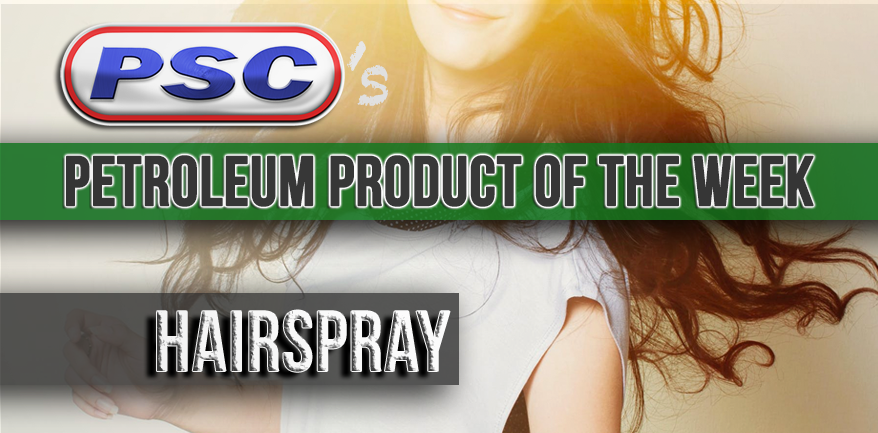Petroleum Product of the Week: Hairspray
By on Feb 09 2018

Before the musical and before the hair commercials, hairspray's history started out, well, outside of the beauty industry. Over time, it's become a cultural phenomenon that helped create hairstyles that defined generations who doesn't still refer to '80s hair " after all?
But it all started with one practical need: the aerosol can. Hairspray itself used to exist in the form of clays and gums that were applied by hand, but the invention of the aerosol can changed everything.
Development of the aerosol can
During World War II, soldiers needed a method for more effectively applying insect repellant. The aerosol can was developed by the U.S. Army, and soon the invention's additional applications became evident.
The beauty industry kicked off with the bottling of a resin-based spray in 1948 by Chase Products. In 1950, Helene Curtis coined the term hairspray " with her Spray Net product, which became a best-selling product alongside Aqua Net.
 Without hairspray, these curls just wouldn't hold up.
Without hairspray, these curls just wouldn't hold up.
The product led to culturally-defining hairstyles such as the beehive and bouffant styles. However, into the '70s, hairspray use began to decline after the discovery of ingredients said to harm the environment and health.
CFCs ring a bell? These are now banned for the harm they were causing the ozone layer. In just ten years, companies made adjustments to remove these harmful ingredients from hairspray, and the product took off again in the '80. Just in time for big hair!
Today, it's just as popular as ever with endless brands, hardness levels, and even scents.
How hairspray is made
While some things have changed since its original invention, hairsprays are still made with the same key ingredients: polymers (holding agents), solvents, additives, and propellants.
Polymers are what hold the hair together. There are different kinds that are used for varying strength and hold.
Solvents are the carriers of hairspray's active ingredients, while additives help both the texture of hairspray (the ultimate hairspray feels like you aren't wearing any) and to keep the inside of the container from rusting.
Finally, propellants are what get the hairspray out of the can and onto your head. This is where those CFCs used to come into play. Once a propellant leaves the can, it evaporates into the air. Today, propane and butane are often used, which are found in the gas form of petroleum.
Oh, and the place the hairspray actually sprays from is made of plastic as well, so there again we have petroleum. While pump spray bottles lack the propellants of an aerosol can, this plastic element is also present; therefore, petroleum is also present!
There you have it petroleum plays a significant role in getting hairspray from the aerosol can onto your hair. Now, do up your hair and put on your dancing shoes.
Sources:
https://www.aol.com/article/lifestyle/2015/01/03/the-story-behind-hairspray/20577435/ https://en.wikipedia.org/wiki/Hair_spray https://www.adorebeauty.com.au/styling-products/guide/hairspray-made-of http://www.madehow.com/Volume-7/Hairsproy.html https://en.wikipedia.org/wiki/Butane






